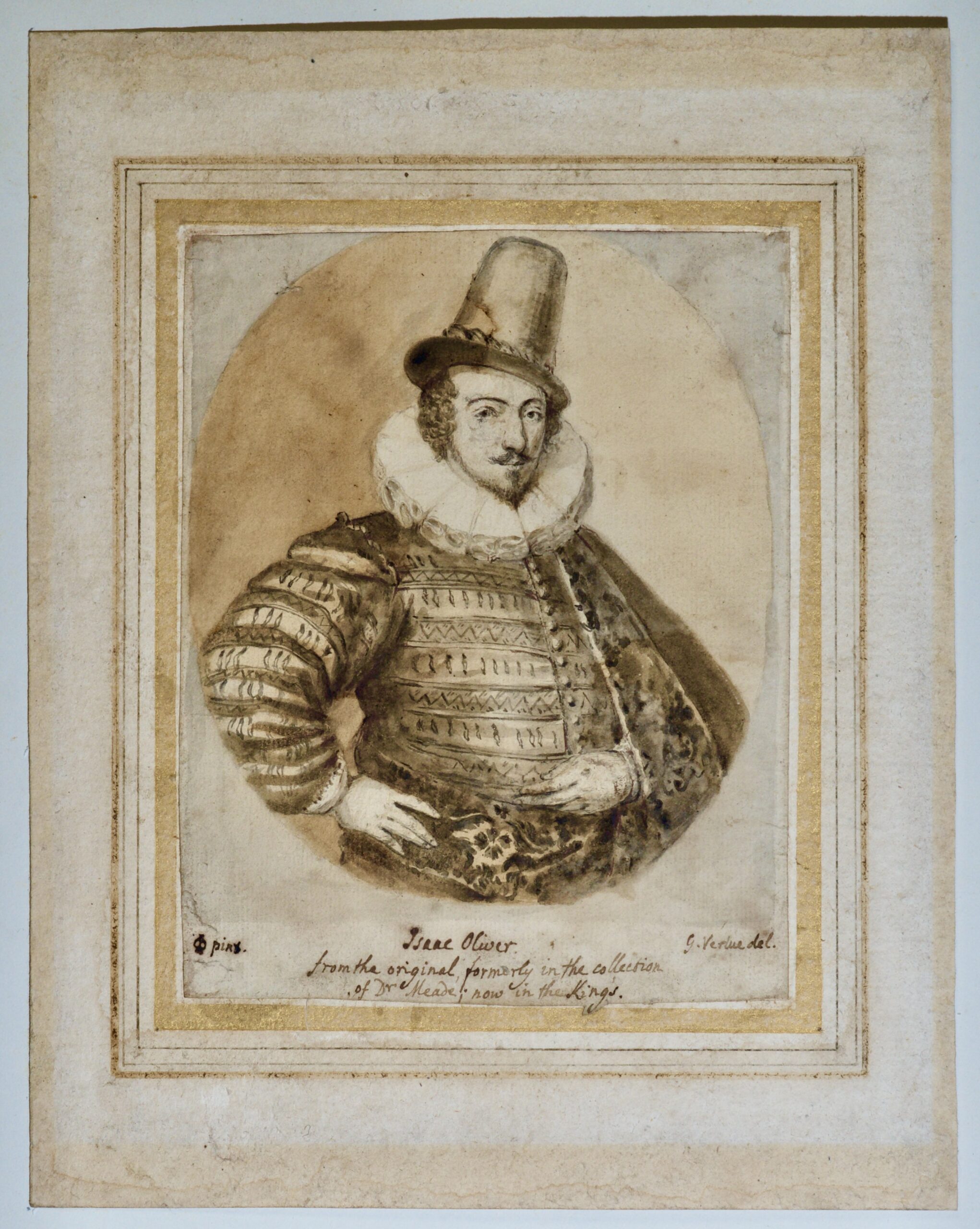We need your support to keep the house open for generations to come. Become a member or donate to our fundraising initiatives today.
Published in 1774, ‘A Description of the Villa’ of Horace Walpole forms a comprehensive record of the contents of Strawberry Hill House.
Famous paintings include The Ladies Waldegrave by Reynolds, now housed at the National Gallery of Scotland and portraits of Thomas Gray and Walpole himself by John Giles Eccardt, now hung in the Blue Bedchamber on loan from the National Portrait Gallery.
Further artworks included Walpole’s collection of miniatures by Holbein, Hilliard and Isaac Oliver, which he considered to be ‘the largest and finest in any country’. Walpole’s ceramic collection comprised over 1200 pieces, ranging from ancient Greek pots, Renaissance maiolica to modern porcelain.
Walpole also harboured a special interest in the collection of historical oddities, such as James I’s gloves, King William III’s spurs worn to the Battle of the Boyne, Cardinal Wolsey’s hat and a lock of Edward IV’s hair ‘cut from his corpse in St George’s Chapel at Windsor’.
Following the Great Sale of 1842, Walpole’s collection was dispersed worldwide. In the early 20th Century American collector, Wilmarth Lewis, gathered as much Walpoliana as he could and bequeathed his collection to Yale University. This can still be visited today in the Lewis Walpole Library, USA.
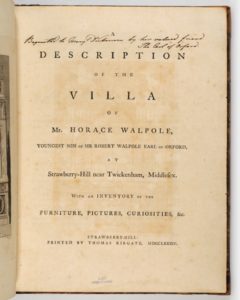
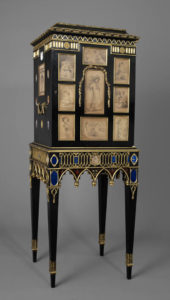
Oil on canvas. Painted by the workshop of François Clouet, a highly successful portrait painter at the French court. It depicts the last members of the Valois dynasty, including Charles IX who was crowned King of France in 1560, aged just ten.
Horace Walpole kept it in the Gallery at Strawberry Hill. He owned a number of valuable works of art linked to the Valois dynasty and was also fascinated by the Medici.
In 2020, it was accepted in lieu of inheritance tax by HM Government and allocated to the Strawberry Hill Collection Trust. You can now find it in our Gallery.
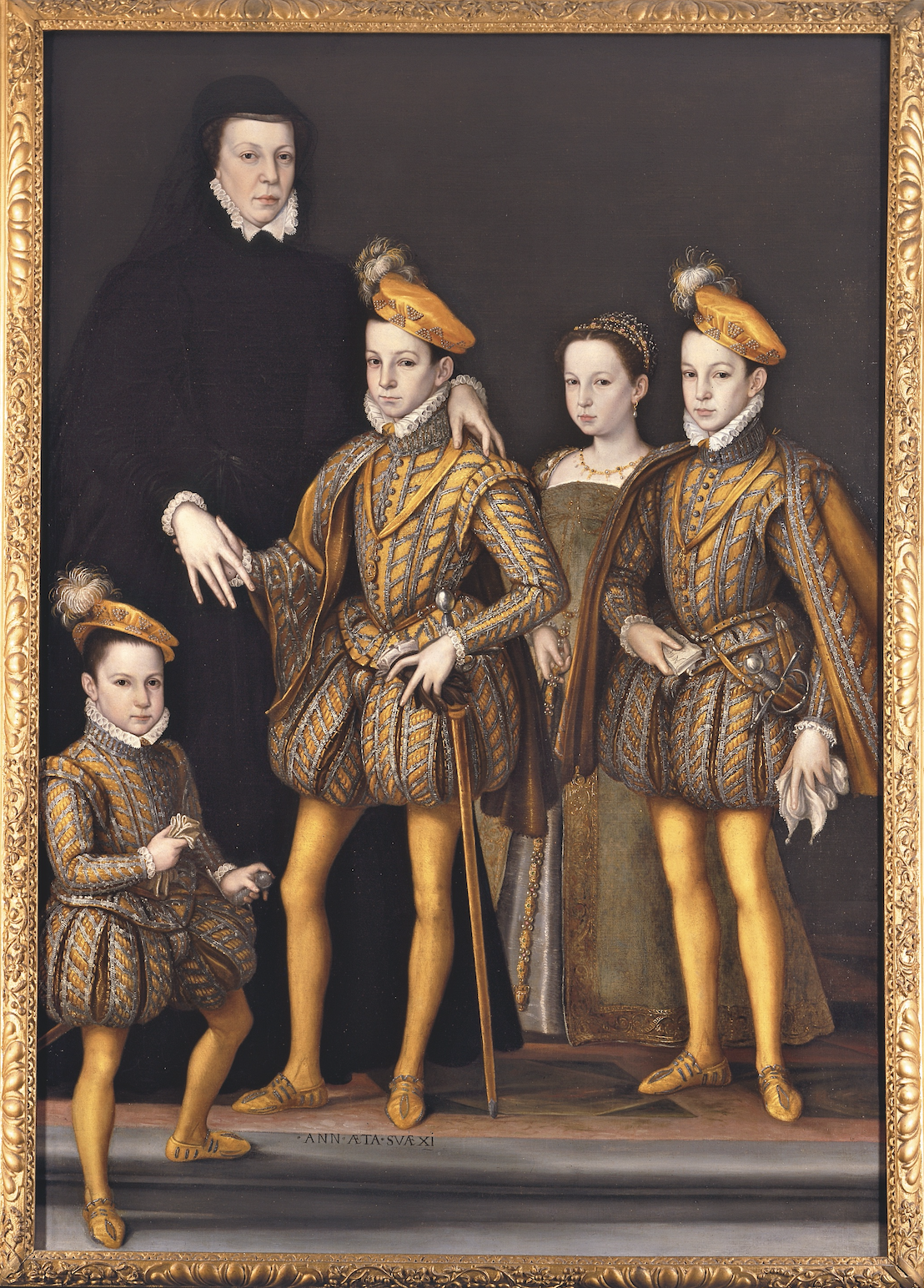
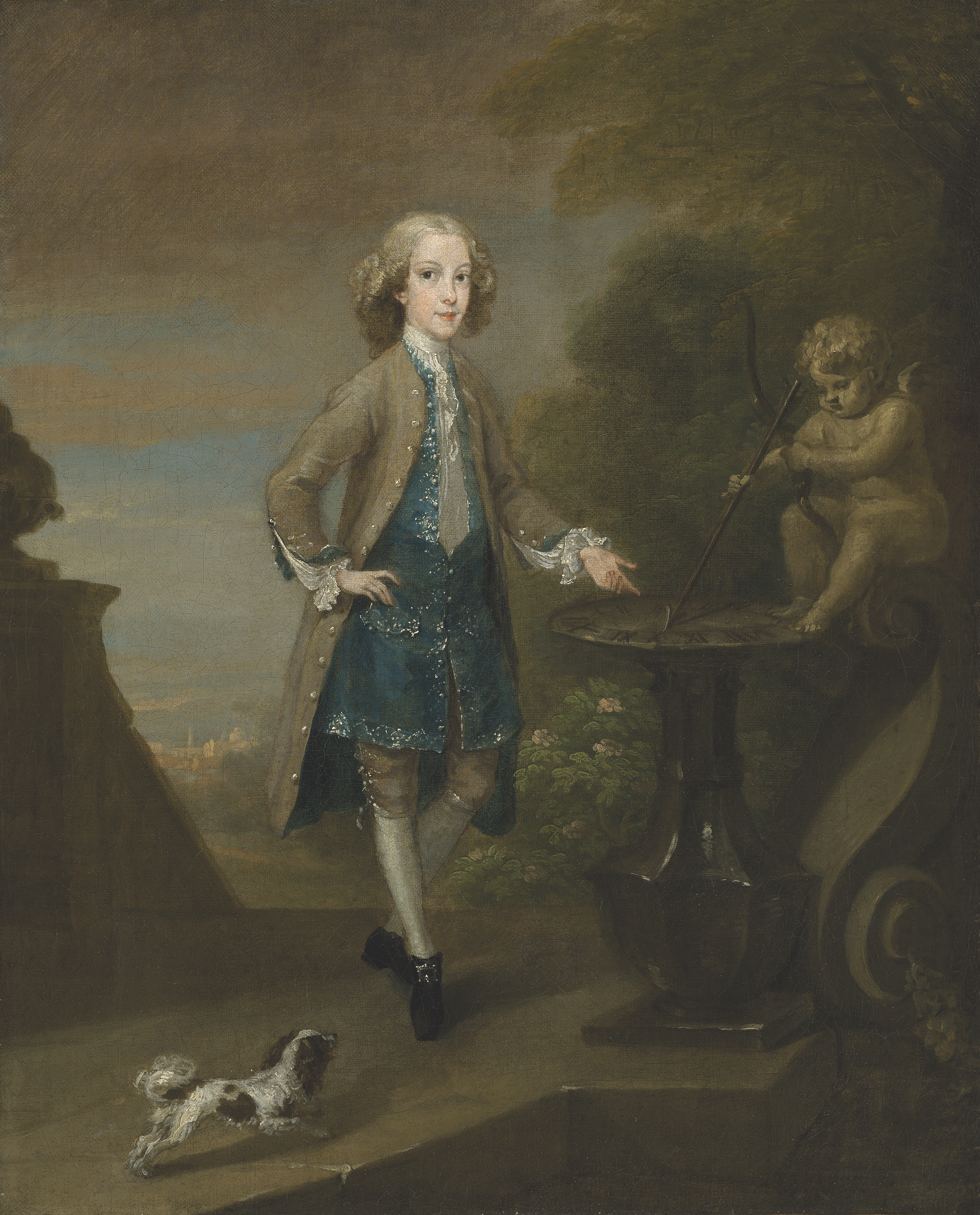
Oil on canvas. Painted by William Hogarth, upon the commission of Sir Robert Walpole, the first British Prime Minister, when youngest son, Horace, was aged ten. The playful spaniel in the foreground is one of a long line owned by Horace throughout his life.
It is the earliest surviving oil portrait of Walpole, and the earliest-known commissioned picture of an identifiable sitter by Hogarth. Walpole was an enthusiastic collector of Hogarth, whom he described as “a great and original genius.”
In 2022, it was acquired by the Strawberry Hill Collection Trust, with the support of the Acceptance in Lieu scheme and grants from the National Heritage Memorial Fund and the Art Fund, as well as funds raised through a public appeal. You can find it in our Green Closet.
Chinese porcelain jardiniere. As part of the mid-1700s craze for all things Chinese, especially porcelain, Walpole amassed a collection of around 300 pieces including this one, which Walpole brought to Strawberry Hill in the 1760s
It is famed that Walpole’s favourite cat, Selima, drowned in this tub while trying to catch goldfish. The incident was later immortalised in a mock-heroic ode by Walpole’s friend, the poet Thomas Gray, Ode on the Death of a Favourite Cat, Drowned in a Tub of Gold Fishes (1747).
In 2022, it was accepted in lieu of inheritance tax by HM Government and allocated to the Strawberry Hill Collection Trust. You can find it in our Hall.
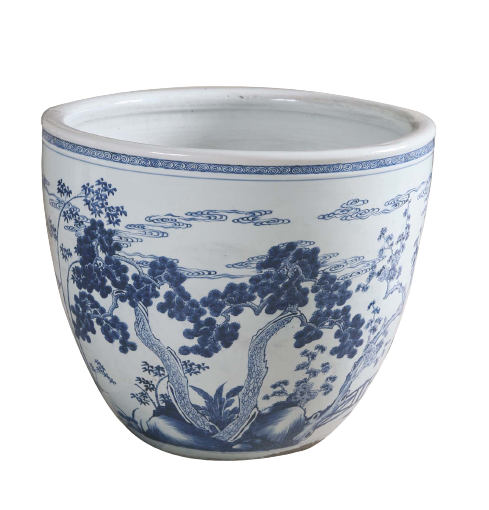
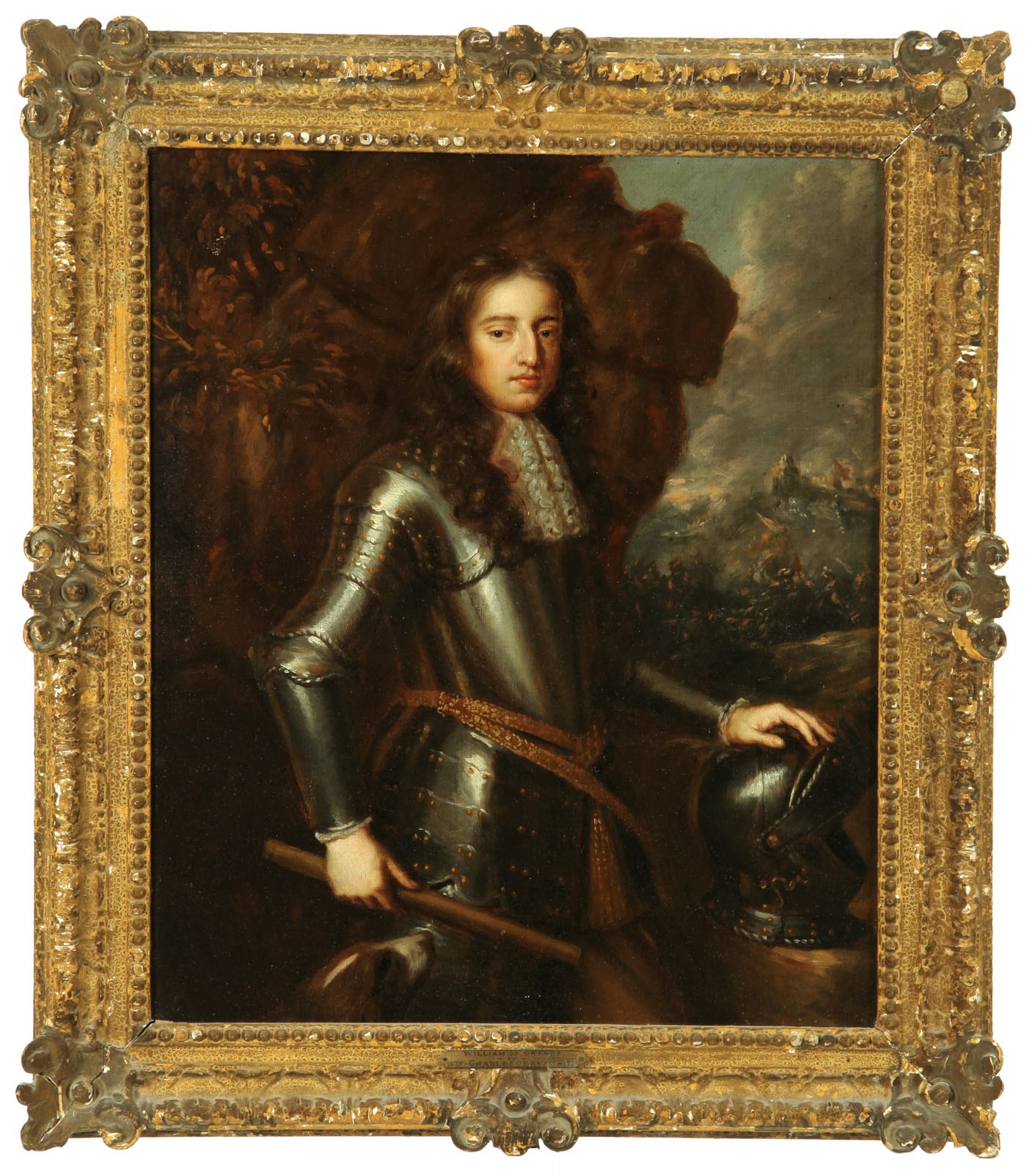
Oil on canvas. Painted by Charles Jervas, copying Sir Peter Lely. Lely painted the original in 1677 to mark William’s marriage to Mary Stuart.
Jervas painted this as part of a set of nineteen portraits, which were hung by Horace Walpole in the Yellow Bedchamber at Strawberry Hill. You can now find this painting in our Green Closet.
In 2015, it was acquired by the Strawberry Hill Trust, with the support of the ACE/V&A Purchase Grant Fund, and the Beecroft Bequest. It was later transferred to the Strawberry Hill Collection Trust.
Carved walnut chair inlaid in marquetry with the arms of Sir Peter Warburton, one of the signatories to the death warrant of Guy Fawkes. Horace Walpole kept it in the Hall at Strawberry Hill, where it remained until 1842 when it was sold as a ‘most curious and finely carved Elizabethan armchair’.
The chair was carefully restored at West Dean College of Arts and Conservation for three years before it was exhibited in the house. You can now find it in our Holbein Chamber.
In 2016, it was acquired by the Strawberry Hill Collection Trust, with the support of the Heritage Lottery Fund, the ACE/V&A Purchase Grant Fund, the Beecroft Bequest and a private donor.
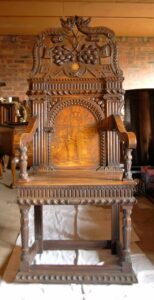
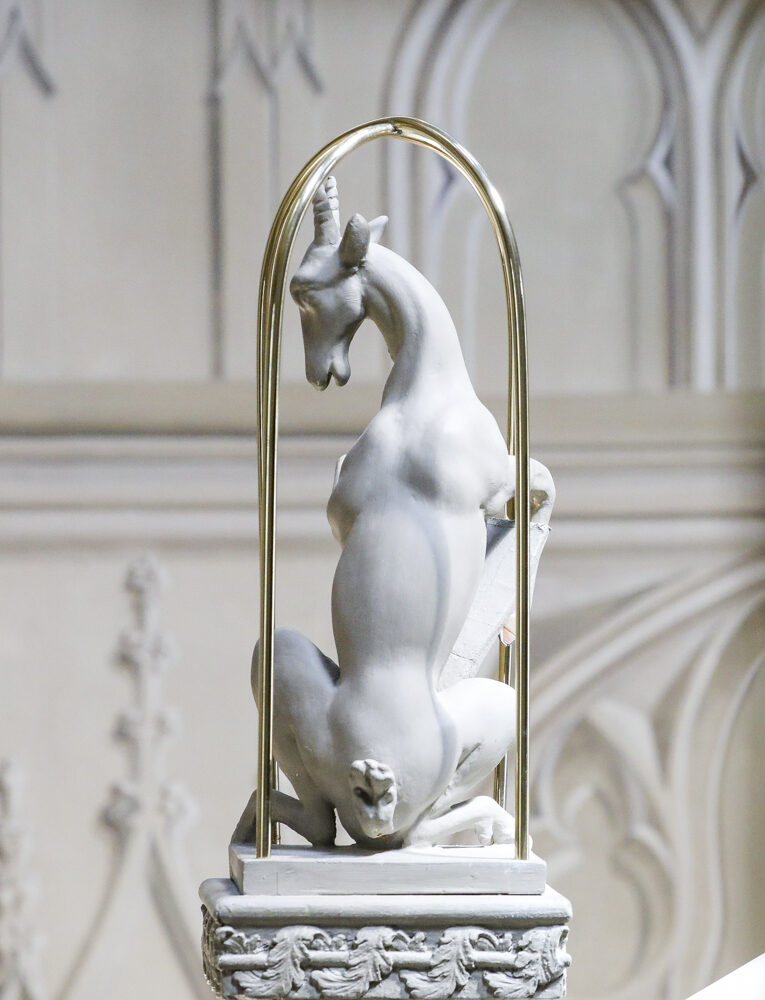
Limewood, painted to look like carved stone. In the early 1960s they were all gilded. Around 2000, one was stolen, so a replica was made and they were encased in brass.
They represent the armorial beasts that support the coat of arms of the Earls of Orford – Sir Robert Walpole was granted these symbols when he served as Chancellor of the Exchequer.
You can find eight of them on the staircase in our Hall. In 2007, as part of the fabric of the building, they were leased to the Strawberry Hill Trust by the Catholic Education Service.
White Carrara marble inlaid with fine plaster using the scagliola technique. At £288, it was the most expensive decorative fitting in the house.
Designed by the renowned neoclassical architect, Robert Adam, based on the tomb of Edward the Confessor in Westminster Abbey. Manufactured by Johann Augustus Richter. The piece inside the fireplace (called a ‘fire-dog’) was added by Lady Waldegrave.
In 2007, as part of the fabric of the building, it was leased to the Strawberry Hill Trust by the Catholic Education Service. You can find it in our Round Drawing Room.
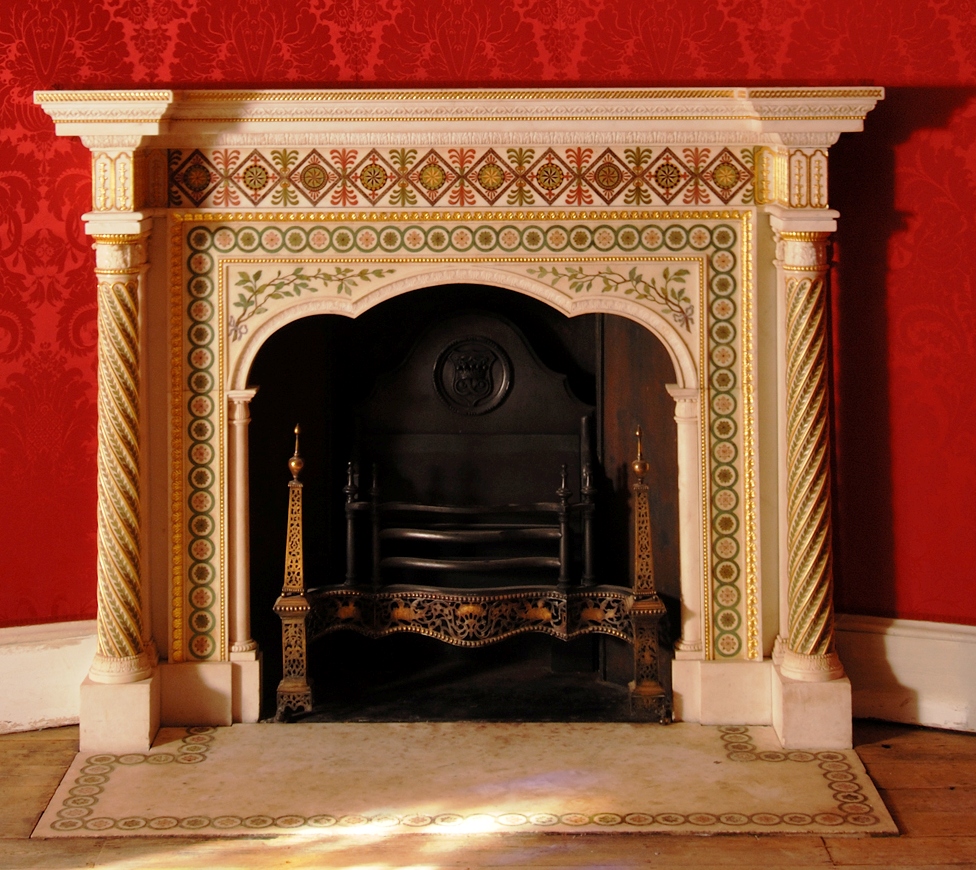
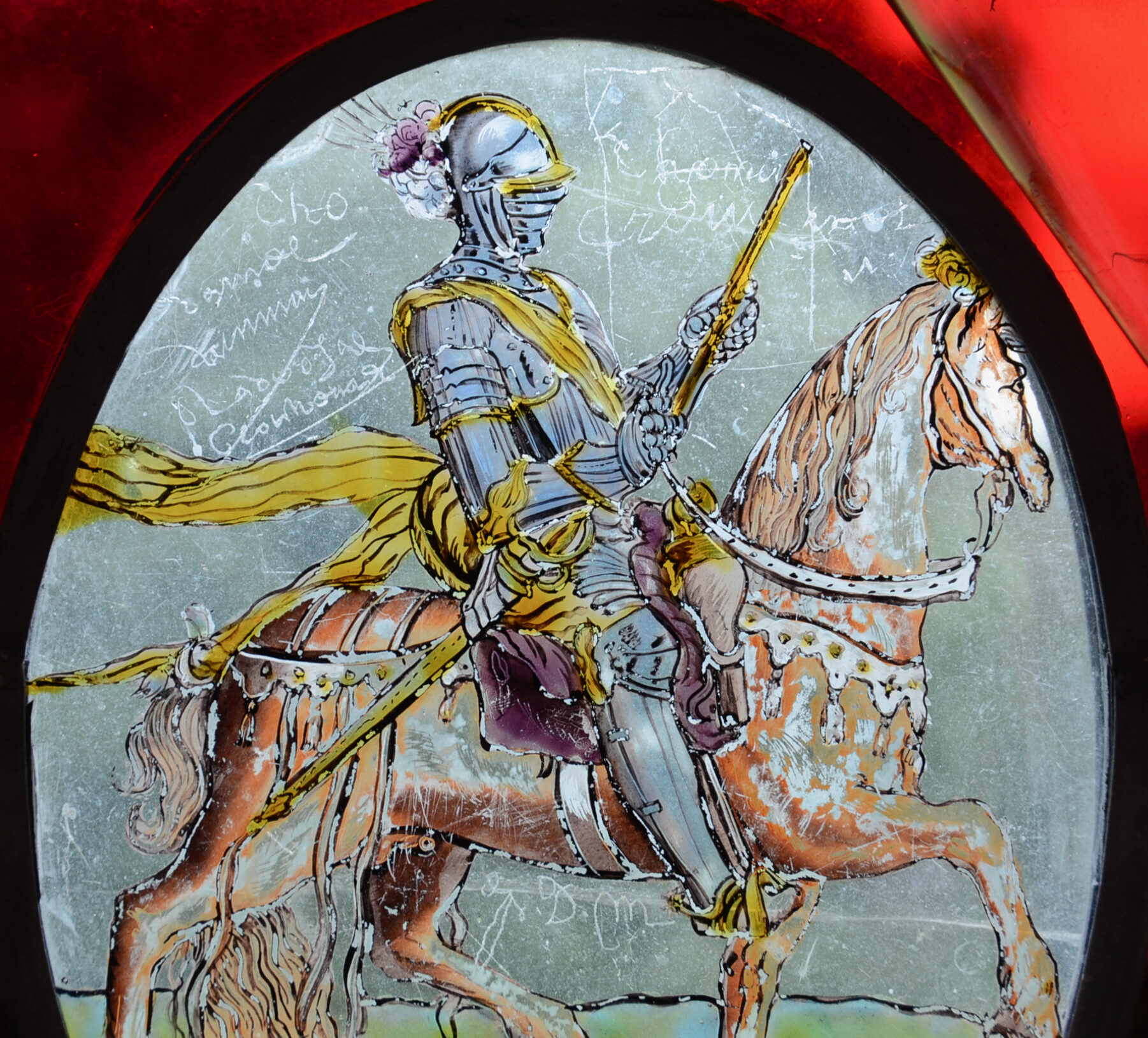
Roundel of Flemish stained enamel on glass, purchased by Horace Walpole in 1750.
It features a mounted medieval knight and several graffiti inscriptions, perhaps by Walpole himself. Highlights include the name ‘Thomas Cromwell’ marked by the knight’s head.
In 2007, as part of the fabric of the building, it was leased to the Strawberry Hill Trust by the Catholic Education Service. You can find it in our Library.
Bronze statue of Horace Walpole’s mother. This is an English copy of a marble sculpture produced 1741-1745 by Filippo della Valle. Walpole kept a different bronzed copy of this sculpture in the Tribune.
Valle’s original stands in Westminster Abbey today as a monument to Horace Walpole’s mother, Catherine Shorter, Lady Walpole. Valle based his sculpture on an Ancient Roman marble of an unknown woman that is now housed in the Vatican.
In 2017, our copy was accepted in lieu of inheritance tax by HM Government and allocated to the Strawberry Hill Collection Trust. You can find it in our Tribune.
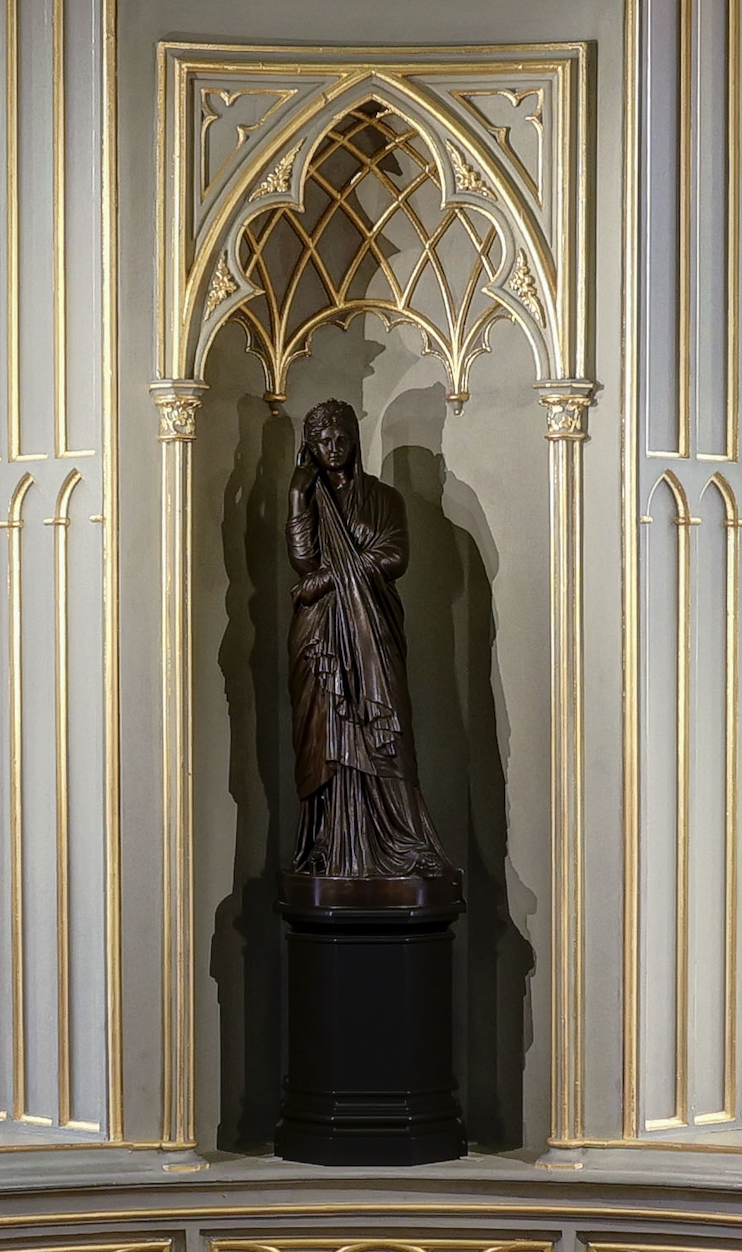
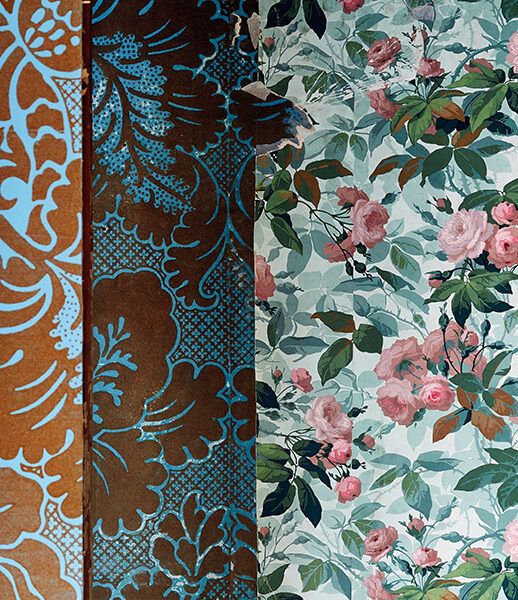
Horace Walpole’s wallpaper on the left has a blue background with a light brown flocked design made with coloured paper and powdered wool, imitating luxurious damask hangings.
Lady Waldegrave’s wallpaper features large cabbage roses and foliage in nine shades of blue and green. It was made in France and supplied by Cowtan & Sons.
This juxtaposition of wallpapers from two eras showcases the house’s evolving aesthetic. In 2007, as part of the fabric of the building, they were leased to the Strawberry Hill Trust by the Catholic Education Service. You can find them lining the cupboard in Mr Walpole’s Bedchamber.
Darkened and gilded wood, with a portrait in oil on canvas of George Walpole, 3rd Earl of Orford. John Giles Eccardt painted it, copying a miniature by Jean-Étienne Liotard. Originally one of a pair, this mirror was designed by Horace Walpole and made by William Hallett Senior.
In 2014, it was accepted in lieu of inheritance tax by HM Government and allocated to the Strawberry Hill Trust. It was later transferred to the Strawberry Hill Collection Trust. You can find it in our Great Parlour.
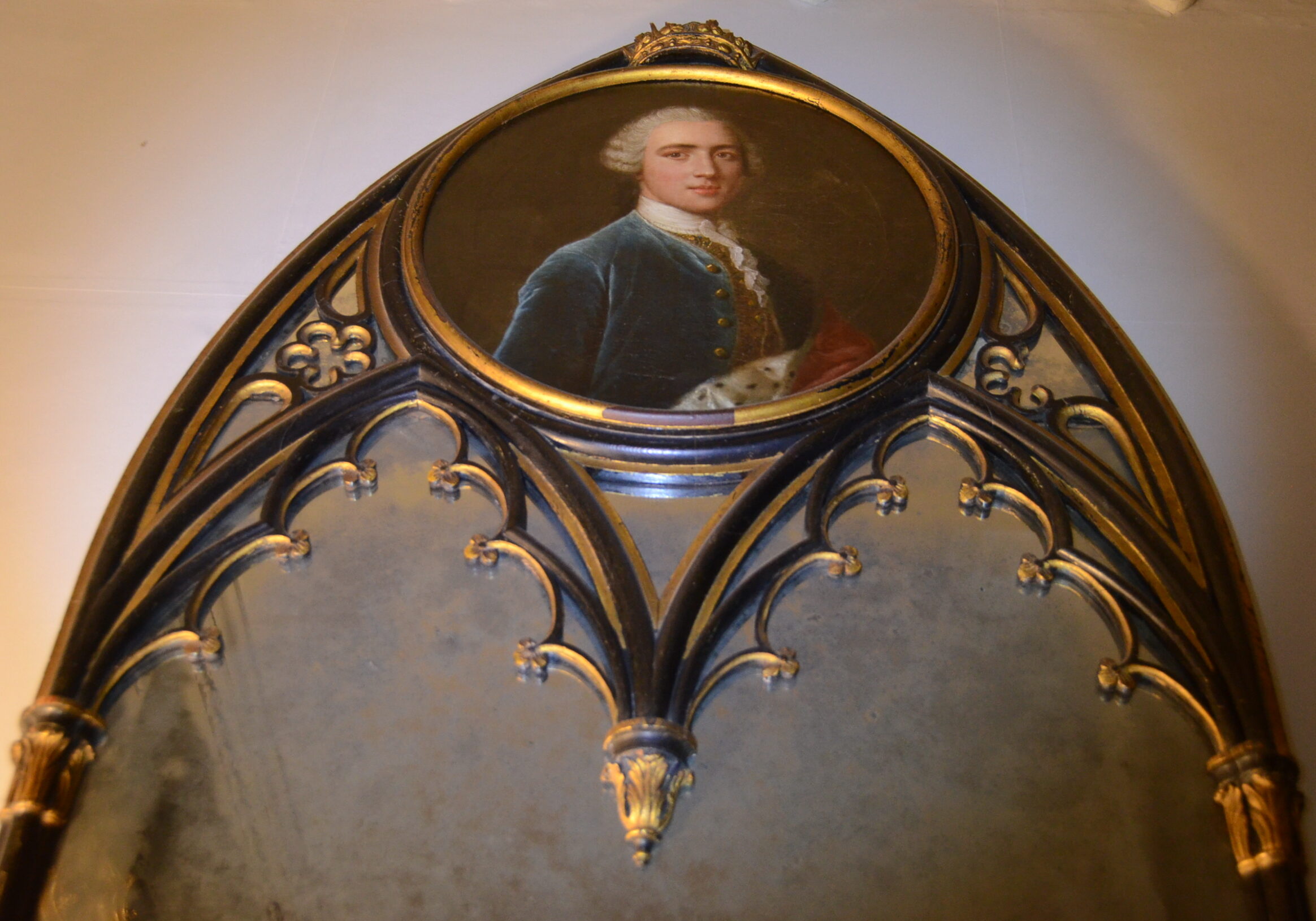
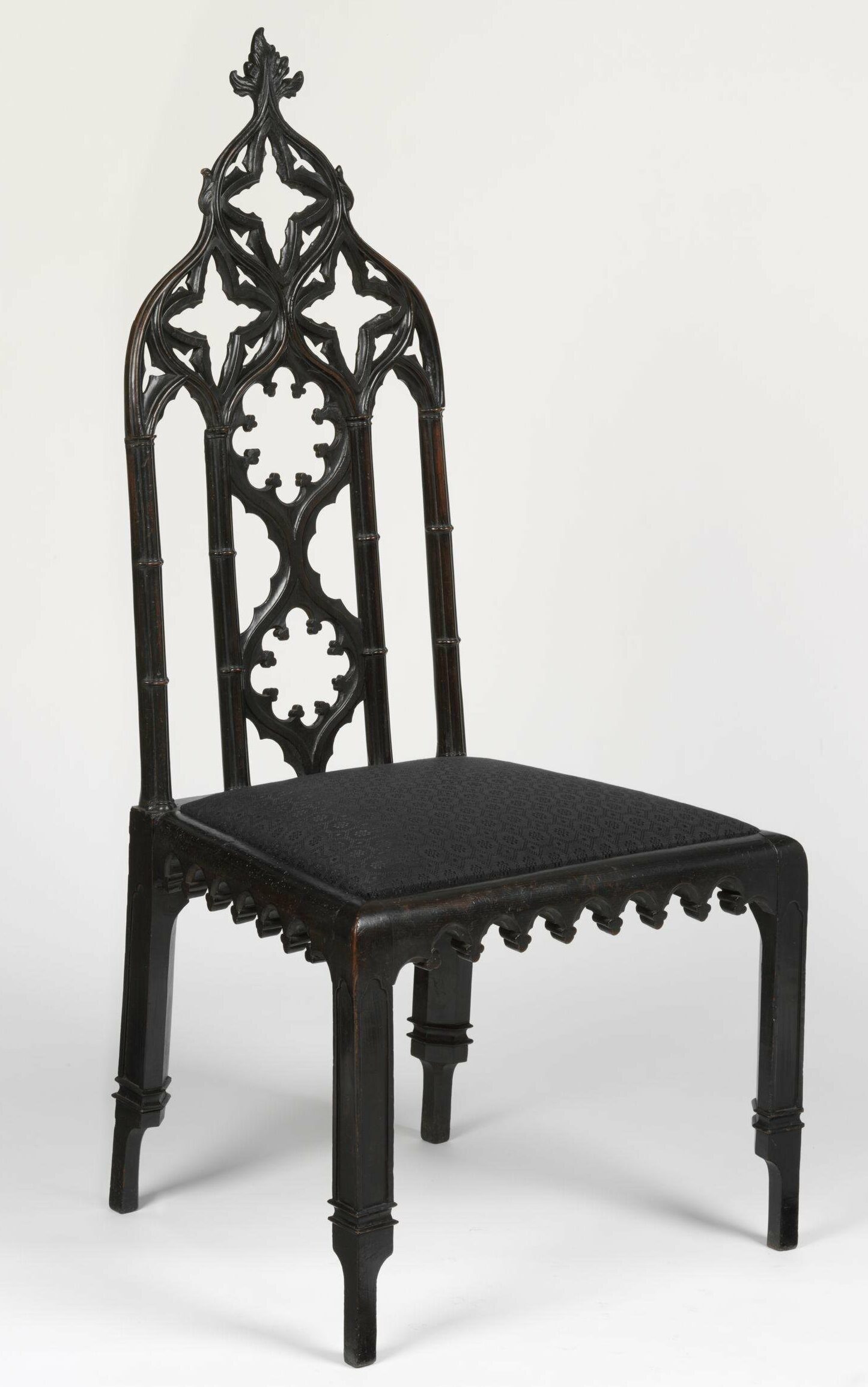
Ebonised beechwood with horsehair seats. Horace Walpole commissioned a set of eight of these chairs, designed by Richard Bentley and supplied by cabinet-maker William Hallet.
Walpole kept them in the Great Parlour as dining chairs. The dado in this room is deliberately low to be on level with the seats. The chairs’ backs are slightly higher than normal and adhere to Walpole’s suggestion that they be based on the outline and tracery of a Gothic window.
Four were reproduced by Christopher Howe, upon the commission of the Strawberry Hill Trust. They were later transferred to the Strawberry Hill Collection Trust. You can find them in our Great Parlour.
Pencil, pen, ink, and wash. Painted by the antiquarian artist George Vertue, copying Isaac Oliver’s self-portrait miniature from c.1590 which is now in the Royal Collection.
It was originally bought from Vertue by Horace Walpole in 1758, along with many of Vertue’s notebooks that Walpole kept in the Green Closet. This collection formed the basis of Walpole’s Anecdotes of Painting in England (1761-1771).
In 2020, the painting was donated to the Strawberry Hill Collection Trust, via Arts Council England’s Cultural Gifts Scheme. You can now find it in our Green Closet.
